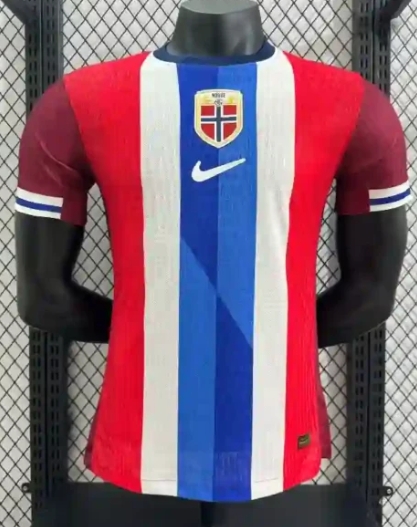norway soccer jerseys football YUPOO china B2B2C Wholesale Supplier Branded national norway soccer jerseys retro shirts, join us on whatsapp | Yupoo fashion national norway soccer jerseys players jerseys football retro jerseys reseller online store , Yupoo jerseys Replica top version for yupoo wholesale drop shipping jerseys to worldwide.
Norway's football history is deeply intertwined with its national identity, showcasing a powerful connection between the sport and the Norwegian people. The national football team, known as "Norge" or "The Guls," has a storied past filled with achievements and challenges. The jerseys worn by the national team are significant symbols of this heritage, representing unity, pride, and a rich soccer tradition. This overview will explore the history of Norwegian soccer jerseys, the national team's journey, and the cultural significance of the sport in Norway.
Football was introduced to Norway in the late 19th century, with the first organized match taking place in 1885. The Norwegian Football Association (NFF) was established in 1902, paving the way for the formalization of soccer in the country. The early years were characterized by the formation of local clubs, and by the 1900s, the sport began to gain popularity among the populace.
The Norwegian national team played its first official match in 1908, against Sweden, becoming one of the early participants in international football competitions. As soccer evolved in Norway, so did the designs of national jerseys, marking an important aspect of the sport's identity.
The early 20th century saw Norway participating in international competitions, but it wasn’t until the mid-1950s that the national team began to establish itself on the global stage. The team qualified for its first significant tournament, the 1952 Helsinki Olympics, where they gained valuable experience.
During this era, the jerseys were quite simple, predominantly featuring the national colors of red, white, and blue. The designs often included minimal logos and were primarily made from heavier materials, reflective of the time.
Norway's golden era in international football arrived in the late 1980s and early 1990s. The national team qualified for the 1988 UEFA European Championship and later for the 1994 FIFA World Cup in the United States. This period saw the emergence of iconic players such as Lars Bohinen, Tore André Flo, and Gunnar Halle.
The jerseys worn during this era began to feature bolder designs and technological advancements. Norway's home jersey typically featured a striking red base with white and blue accents, representing the national colors prominently. The unique crest designs also became more elaborate, showcasing the pride associated with wearing the national jersey.
The late 1990s marked another high point for Norwegian football when the national team qualified for the 1998 FIFA World Cup held in France. The team had a mix of experienced players and new talents, creating a competitive squad that raised expectations. The home jersey for this tournament incorporated contemporary design elements, including clean lines and stylish accents, appealing to both players and fans alike.
However, the 1998 World Cup proved to be a difficult tournament for Norway, as they were eliminated in the group stage. Despite this setback, the national team continued to develop, participating in subsequent qualification campaigns for major tournaments.
In recent years, Norway has been on a quest to reshape its international presence and return to competitive football. The team has shown promise with a new generation of talented players such as Erling Haaland and Martin Ødegaard leading the charge. Their performances have rejuvenated interest and hope among fans.
The designs of Norwegian soccer jerseys have evolved significantly over the years, reflecting both fashion trends and advancements in sportswear technology. The latest jerseys emphasize functionality while contributing to the aesthetic appeal:
Material and Design: Modern jerseys are lightweight, breathable, and made from moisture-wicking fabrics, enhancing player comfort during matches. Designs often feature dynamic graphics and patterns that embody the spirit of Norwegian football.
Home and Away Kits: The color scheme traditionally centers around red for the home jersey and white or blue for the away kits. Recent designs have incorporated more innovative elements, with graphic patterns inspired by Norway’s stunning landscapes, symbolizing pride in the nation’s natural beauty.
Cultural Significance: Each iteration of the jerseys tells a story, reflecting the desires and ambitions of the national team while capturing the hearts of fans who wear them. The jerseys serve as a connection point between the team and supporters, showcasing unity during critical matches.
Soccer in Norway transcends mere sport; it is deeply embedded in the nation’s cultural fabric. The passion for football unites communities, fostering a sense of identity and belonging among Norwegians.
Fans don the national jerseys with pride during international tournaments, converting stadiums and public spaces into vibrant displays of red, blue, and white. This collective enthusiasm represents a significant moment for players and supporters alike.
Norwegian soccer jerseys have gained international recognition, with fans not only within Norway but also among the diaspora and football

